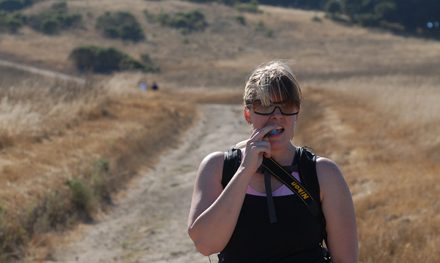Image courtesy of Pexels
Sure, there are naysayers out there who eschew the value of hiking light at the expense of hiking smart (known colloquially as going “stupid light”) but even they will qualify their points by noting that when done right there’s a method to balancing weight with efficiency, that can yield impressive results.
What’s the secret? It starts with doing an overview of your equipment, making sure you’re outfitting yourself with the best hiking gear, then making sure you’re taking only what you need (without compromising your ability to get the job done). Here are seven tips to get you started on your path to hiking lighter.
Principle #1: Go Lighter
This is, perhaps, the most obvious part of the “hiking light” equation. You’ll need to review all of your gear, removing what you don’t need and searching for lighter alternatives to the things that you have to take.
For instance, are those heavy hiking boots a necessity? Maybe you can do just as well with a pair of low-top hikers or even a sturdy pair of sneakers. As long as your footwear is providing the support that you need (and that generally comes from the heel cup) those clunky boots might be obsolete.
Remember, though, that light doesn’t always make right. There are some instances where sacrificing a few pounds isn’t worth it. So-called ultralight flashlights and headlamps, for example, don’t have the output necessary for regular use. If you know you’re going to need to bring your own illumination, you might be better off with the real deal.
Perform that sort of pro/con analysis with everything you intend to bring on your hike. In the end, you should be able to put together a kit that incorporates your needs while also shaving off a considerable amount of weight.
Principle #2: Hike In A Group
The reasoning here is obvious. When you go with a group, you can share the load amongst your mates. By divvying up heavier necessities, you’re leveraging teamwork to ease the load of each individual in your crew. Examples of such necessities include your tent, the map, cookware, and your water container. In addition, having a group provides a mental boost, along with an increased sense of security for your adventures.

Image courtesy of Pexels
Principle #3: Ditch Weight As You Go
Consumables carry weight. By going through the heavier stuff first, you shed your pounds faster and find yourself benefitting from the commensurate weight reduction more. This applies to snack foods and other one-time use items you bring on your journey. Try to bring alternatives that will use less weight (powder-based drinks, for example) and eat/use the things that will expire or are taking up the most weight/space before you touch anything else.
Principle #4: Consolidate Your Gear
Can you turn two items into one? By looking for multipurpose items you can cut some extra weight from your pack and simplify your kit. Your smartphone, for instance, can serve as a communication device, camera, journal, and GPS all at once. Multipurpose items don’t have to be fancy either. Something as simple as a bandana can function as a towel, neck/face protection, and a crude filter for water. Scour every source you can for gear you can apply in multiple fashions—your back will surely thank you for it.
Principle #5: Plan For The Weather
Dressing in a climate-appropriate manner will make your hike easier. If it’s warm, you might not need a ton of clothes to keep your temperature up. If it’s cold, you’ll need more clothing, but it doesn’t have to way you down to excess. Try layering clothes that you can mix and match, as it’s more effective than bringing one large coat or sweater, and will help save on weight as well.
Principle #6: Improve Your Skillset
The more you know, the less you’ll have to carry. A good portion of the items you might be carrying with you now, you do so because you need them to perform a particular task or overcome an obstacle while you’re out in the wilds. Learning how to do more with less will decrease your reliance on said items, to the point where you can disregard them all together and get by without them.
Principle #7: Train Your Mindset
Going light won’t happen unless you want it to. You’ll have to train your mind to think about lightening your load in a way that’s smart and effective. Always be on the lookout for opportunities to shed item that is superfluous and to be creative in your weight cutting, but, at the same time, be judicious about what you’re discarding and make sure you bring the things you’ll truly need to make your hike a success.
Do you hike light? Got anything to say about hiking “stupid light”? If you have any stories, updates or corrections, please let us know by commenting below.
Exploring the Great Ocean Road?
You won’t see the best sights from your car. Get the definitive guidebook, featuring the 25 best walks in the area with detailed instructions and maps.







I suppose “stupid light” is fine in certain locations and weather conditions. Anything remotely hostile in nature and I would certainly be paying far closer attention to what comes with me. Super post, most useful! Thanks and happy hiking…
Thanks for stopping by, Gavin! Agreed on all counts.
Very helpful tips! Most of them are common sense, but we tend to forget one or the other when the time comes.
So true, Jade. Thanks for reading and commenting.
Cheers
Neil